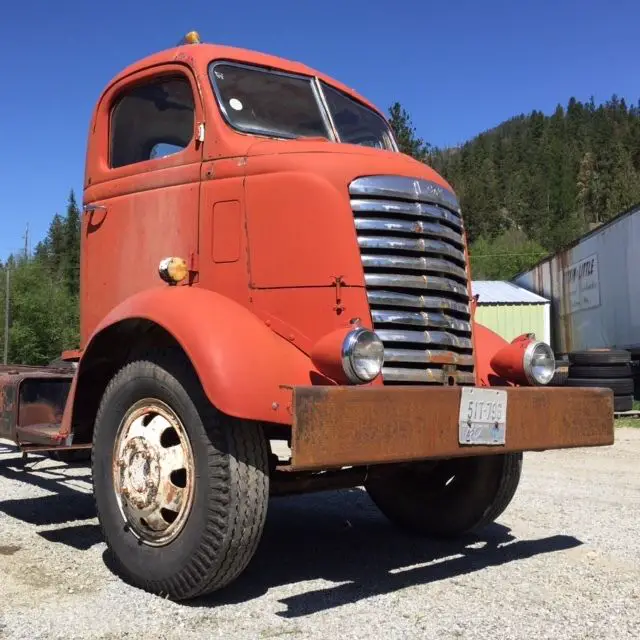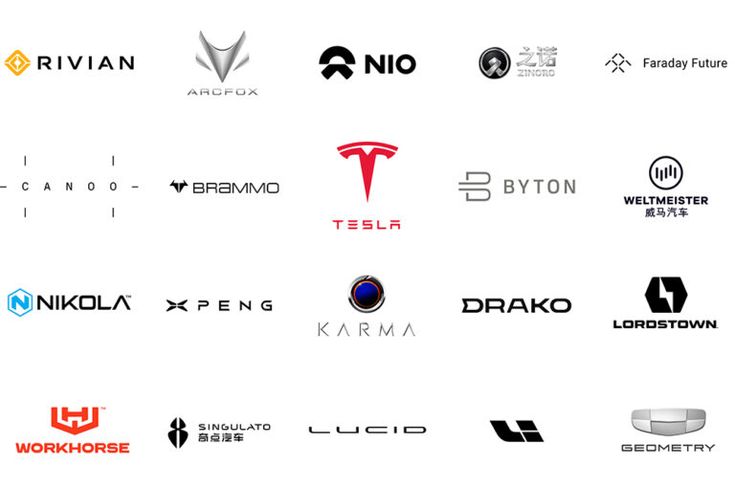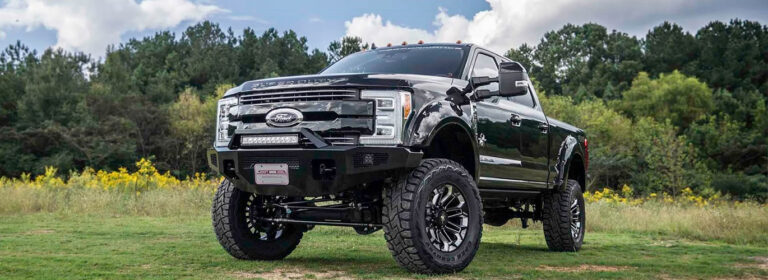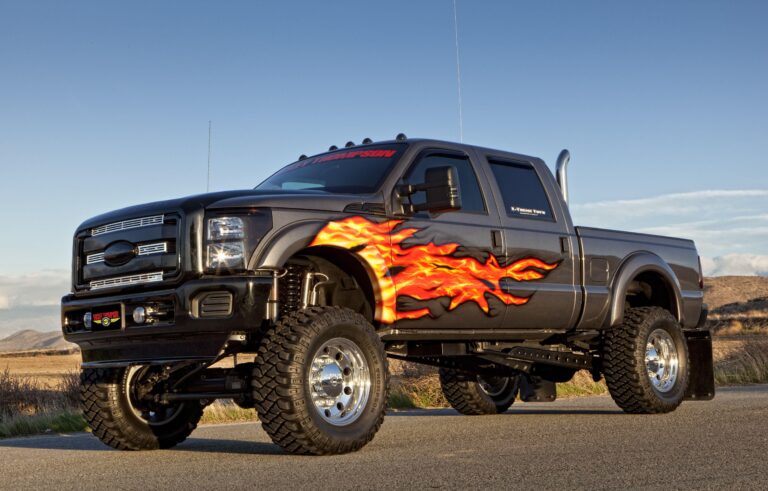Cabover 4×4 Trucks For Sale: Your Ultimate Guide to Off-Road Versatility
Cabover 4×4 Trucks For Sale: Your Ultimate Guide to Off-Road Versatility cars.truckstrend.com
In the realm of off-road exploration, utility, and overlanding, a unique breed of vehicle stands out for its distinctive design and unparalleled capabilities: the cabover 4×4 truck. These specialized machines, characterized by their engine-under-cab configuration, offer a compact footprint, exceptional visibility, and robust commercial-grade foundations, making them highly sought after by adventurers, tradespeople, and enthusiasts alike. If you’re considering purchasing one of these formidable vehicles, understanding their nuances is key.
This comprehensive guide delves into everything you need to know about cabover 4×4 trucks for sale, from their inherent advantages and popular models to the crucial considerations for buying, owning, and customizing them. Whether you’re planning a globe-trotting expedition, seeking a highly capable workhorse, or simply appreciate their unique charm, buckle up for a deep dive into the world of cabover 4x4s.
Cabover 4×4 Trucks For Sale: Your Ultimate Guide to Off-Road Versatility
Understanding the Appeal of Cabover 4×4 Trucks
Cabover 4×4 trucks, often referred to as Forward Control (FC) vehicles, place the driver and passenger directly above or slightly ahead of the front axle. This design philosophy, traditionally associated with commercial vehicles, translates into significant advantages when paired with a 4×4 drivetrain.
Key Benefits:
- Superior Maneuverability: The short wheelbase, resulting from the cab-over-engine design, allows for an incredibly tight turning radius. This is invaluable on narrow trails, crowded campsites, or confined urban work sites where larger conventional trucks would struggle.
- Excellent Visibility: Sitting directly over the front wheels provides an unobstructed view of the road immediately ahead and around the vehicle. This enhances safety and precision, particularly in technical off-road situations or when navigating tight spaces.
- Compact Footprint: Despite often having impressive payload capacities, cabover trucks tend to be shorter overall than conventional trucks with similar capabilities, making them easier to park, store, and transport.
- Robust Commercial Chassis: Most cabover 4x4s are built on heavy-duty commercial truck platforms, meaning they are engineered for durability, high payload, and continuous use. This translates to a strong foundation for any conversion or demanding application.
- Versatile Platform for Customization: The flat, open chassis behind the cab is an ideal blank slate for various applications, from dedicated overland camper boxes and utility bodies to flatbeds and specialized equipment carriers.
- Unique Aesthetic: Beyond their practical advantages, many enthusiasts are drawn to the distinctive, purposeful look of cabover trucks, setting them apart from conventional pickups or SUVs.
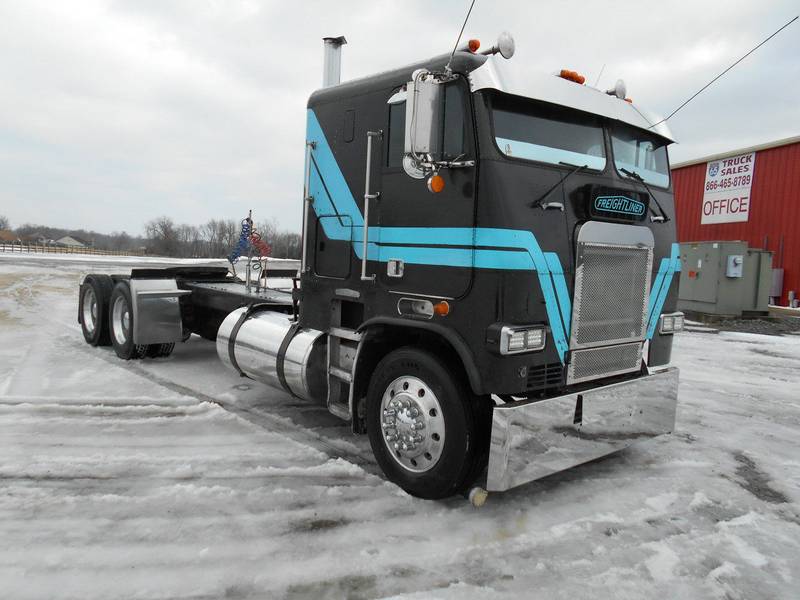
Common Applications:
- Overlanding & Expedition Vehicles: Their compact size, maneuverability, and robust chassis make them prime candidates for building self-sufficient exploration rigs capable of traversing continents.
- Utility & Work Trucks: Used by municipalities, forestry services, fire departments, and construction companies for accessing remote areas, hauling heavy loads, and operating specialized equipment.
- RV/Motorhome Conversions: Providing a sturdy and relatively compact base for custom-built motorhomes, often with off-road capabilities.
- Off-Road Recreation: For those who enjoy tackling challenging trails and need a vehicle capable of carrying significant gear and passengers.

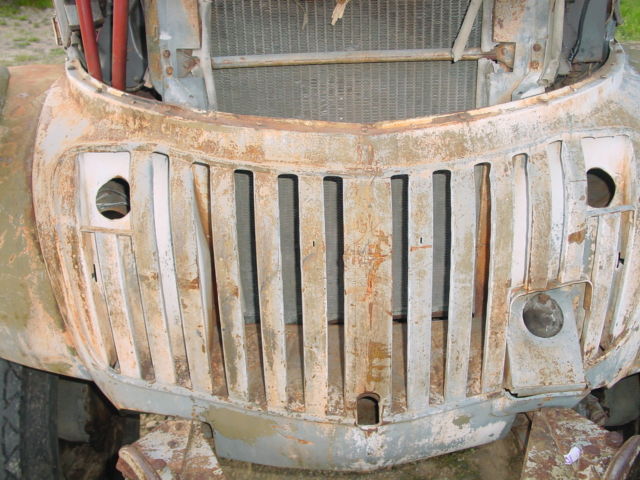
Key Considerations When Buying a Cabover 4×4 Truck
Purchasing a cabover 4×4 requires careful consideration, as these are often specialized vehicles with unique characteristics.
1. Define Your Purpose and Budget:
- Intended Use: Will it be a dedicated overland rig, a daily driver, a work truck, or a weekend toy? Your primary use will dictate the required payload, ground clearance, features, and overall condition.
- Budget Beyond Purchase Price: Factor in costs for initial maintenance, potential repairs, customization (e.g., camper build, lift kit), registration, insurance, and ongoing fuel expenses. These trucks can be expensive to maintain if parts are scarce or specialized mechanics are needed.
2. Vehicle Condition and History:
- Rust is the Enemy: Thoroughly inspect the chassis, cab mounts, frame rails, and body panels for rust. Commercial vehicles often see hard use and may have been exposed to harsh conditions. Pay close attention to structural integrity.
- Engine & Drivetrain: Check for leaks, unusual noises, smoke from the exhaust, and proper function of the 4×4 system (high/low range, lockers if equipped). A pre-purchase inspection by a qualified mechanic (ideally one familiar with commercial trucks or imports) is highly recommended.
- Maintenance Records: Request detailed service history if available. This provides insight into how well the vehicle has been cared for.
- Previous Modifications: Understand any modifications made, especially if it was originally a 2WD truck converted to 4×4. Assess the quality of the conversion.
3. Parts Availability and Serviceability:
- Import Challenges: Many popular cabover 4×4 models (e.g., Mitsubishi Fuso FG, Isuzu NPR) are Japanese imports. While generally reliable, sourcing specific parts can sometimes be challenging or require ordering from overseas.
- Specialized Mechanics: Not all mechanics are familiar with commercial truck systems or specific import models. Identify potential service centers or be prepared for DIY maintenance.
4. Payload Capacity and GVWR (Gross Vehicle Weight Rating):
- Crucial for overlanders or work trucks. Ensure the vehicle’s payload capacity is sufficient for your planned build or equipment, including passengers, fuel, water, and gear. Exceeding GVWR is dangerous and illegal.
5. Engine and Transmission Types:
- Diesel vs. Gas: Most cabover 4x4s are diesel-powered, offering superior torque for heavy loads and off-road crawling, better fuel economy, and often greater longevity. Gas options are rarer but might be simpler to maintain for some.
- Manual vs. Automatic: Manual transmissions offer more control in technical off-road situations, while automatics provide ease of driving, especially in traffic.
Popular Cabover 4×4 Truck Models and Types
The market for cabover 4×4 trucks is diverse, with models originating from various parts of the world, each with its own characteristics.
- Mitsubishi Fuso Canter/FG: Perhaps the most popular choice for overlanding conversions in North America and Australia. Known for their robust ladder frame, reliable diesel engines (often 4M50 or 4D34), and factory 4×4 capability. They offer a good balance of size, payload, and off-road prowess.
- Isuzu NPR/NQR (and similar models): While many Isuzu N-series trucks are 2WD, numerous companies specialize in converting them to 4×4. They share a similar compact design to the Fuso and are known for their reliability and availability.
- Mercedes-Benz Unimog: The undisputed king of off-road utility. Unimogs are legendary for their extreme capability, portal axles, PTO (Power Take-Off) options, and versatility. However, they are significantly more expensive to buy and maintain, complex, and often overkill for casual use.
- Iveco Daily 4×4: A strong contender from Europe, offering excellent off-road capability, a robust chassis, and a comfortable ride. Less common in North America but popular in other parts of the world for overlanding.
- Toyota Dyna/Coaster 4×4: Rarer, but some smaller Toyota cabover trucks and even Coaster buses were produced with 4×4 drivetrains, offering Toyota’s legendary reliability in a compact commercial package.
- Custom Conversions: Many cabover 4x4s for sale are actually 2WD commercial chassis that have been professionally or semi-professionally converted to 4×4, often using components from other trucks (e.g., Ford Super Duty axles). These vary widely in quality and cost.
The Buying Process: A Step-by-Step Guide
- Research and Define Needs: Start by understanding which models align with your budget and intended use. Join online forums and groups dedicated to cabover 4x4s (e.g., Expedition Portal, specific Fuso/Unimog forums) to gather information and insights.
- Set a Realistic Budget: Don’t just consider the purchase price. Factor in shipping, import duties (if applicable), registration, insurance, and a contingency fund for immediate repairs or maintenance.
- Where to Look:
- Online Marketplaces: eBay, Facebook Marketplace, Craigslist (for local finds).
- Specialty Dealers: Companies that import and/or convert cabover trucks (e.g., EarthCruiser, Box Offroad, or smaller independent importers).
- Overland Forums/Classifieds: Dedicated sections on forums like Expedition Portal or various overland groups.
- Auctions: Government surplus or commercial vehicle auctions can sometimes yield gems, but require more expertise.
- Thorough Inspection (Critical!):
- Visual Inspection: Look for rust, body damage, fluid leaks, worn tires, and signs of neglect.
- Engine Bay: Check fluid levels, belts, hoses, and wiring. Look for modifications.
- Underneath: Inspect the frame for cracks or previous repairs, check suspension components, axles, driveshafts, and the transfer case.
- Interior: Check for functionality of all controls, gauges, and HVAC.
- 4×4 System: Test engagement of 4-high, 4-low, and any differential lockers.
- Professional Pre-Purchase Inspection (PPI): If you’re serious about a vehicle, especially an import or highly modified one, pay a reputable mechanic to perform a PPI. This can save you thousands down the line.
- Test Drive:
- Listen for unusual noises from the engine, transmission, or drivetrain.
- Check braking performance and steering responsiveness.
- Test all gears, including reverse, and ensure smooth shifting.
- If possible, test the 4×4 system in a safe off-road environment.
- Negotiation and Purchase: Be prepared to negotiate. Factor in any identified issues from your inspection into your offer. Ensure all paperwork is correct and complete for registration.
- Post-Purchase: Plan for immediate fluid changes (engine, transmission, differentials, transfer case), filter replacements, and a thorough check of all critical systems before embarking on any major trips.
Customization and Upgrades for Cabover 4x4s
One of the most exciting aspects of owning a cabover 4×4 is the potential for customization.
- Overland Camper Builds: The most common modification. This involves mounting a custom camper box, pop-top, or fixed-roof dwelling unit onto the chassis, complete with living amenities like beds, kitchens, bathrooms, and storage.
- Suspension Upgrades: Essential for improved ride comfort, increased payload capacity, and better off-road performance. This can include heavy-duty springs, upgraded shocks, and sometimes a mild lift.
- Tires and Wheels: Larger, more aggressive all-terrain or mud-terrain tires enhance off-road grip and ground clearance. Ensure appropriate load ratings.
- Winch and Recovery Gear: A front-mounted winch is a crucial safety item for self-recovery in challenging terrain. Don’t forget recovery straps, shackles, and a high-lift jack.
- Auxiliary Fuel and Water Tanks: For extended off-grid travel, increasing fuel and water carrying capacity is vital.
- Electrical System Upgrades: Adding auxiliary batteries, solar panels, inverters, and charging systems to power living amenities.
- Utility Bodies: For work applications, specialized service bodies, flatbeds, or crane mounts can be fitted.
Challenges and Solutions
While highly capable, owning a cabover 4×4 can present unique challenges:
- Parts Availability & Cost:
- Challenge: Especially for older or less common imports, parts can be difficult to source quickly or may be expensive.
- Solution: Identify specialty importers or online forums that can help with sourcing. Consider buying common wear items (filters, belts) in advance. Learn basic DIY maintenance.
- Service & Maintenance Expertise:
- Challenge: Finding mechanics familiar with these specialized vehicles can be difficult outside of commercial truck repair shops.
- Solution: Develop a relationship with a good commercial truck mechanic. Join online communities for model-specific advice and troubleshooting.
- Ride Comfort:
- Challenge: Commercial truck chassis are often designed for durability and payload, not passenger comfort, leading to a stiff ride.
- Solution: Aftermarket suspension upgrades (air seats, custom leaf springs/shocks) can significantly improve ride quality.
- Speed and Power:
- Challenge: Most cabover 4x4s are not built for speed; they prioritize torque and durability. Highway speeds might be limited, and acceleration can be slow.
- Solution: Manage expectations. These are utilitarian vehicles, not race cars. Focus on their strengths: carrying capacity and off-road capability.
- Registration & Importation Issues:
- Challenge: Importing vehicles can involve complex regulations, especially if they don’t meet current emissions or safety standards.
- Solution: Work with reputable import brokers or consult your local Department of Motor Vehicles (DMV) for specific requirements before purchase.
Cabover 4×4 Trucks For Sale: Estimated Price Guide
This table provides a general price range for various cabover 4×4 truck types. Prices vary significantly based on year, mileage, condition, modifications, and location.
| Model / Type | Year Range | Condition / Build Level | Estimated Price Range (USD) | Notes |
|---|---|---|---|---|
| Mitsubishi Fuso Canter/FG | 1990s – Early 2000s | Fair – Good (Stock/Light Mods) | $15,000 – $35,000 | Older models, typically manual transmission. Good entry point. Check for rust and drivetrain health. |
| Mitsubishi Fuso Canter/FG | Mid 2000s – 2010s | Good – Excellent (Stock/Light Mods) | $35,000 – $65,000 | Newer engines, often automatic transmission options. More creature comforts. |
| Mitsubishi Fuso Canter/FG | Any Year | Overland-Ready (Full Build) | $80,000 – $250,000+ | Highly customized with camper boxes, extensive off-road upgrades, and amenities. Price depends heavily on build quality, components, and professional vs. DIY. |
| Isuzu NPR (4×4 Conversion) | 2000s – Present | Good – Excellent (Converted) | $40,000 – $100,000+ | Originally 2WD, converted to 4×4 by specialized shops. Price varies based on conversion quality (axles used, suspension), mileage, and overall condition. |
| Mercedes-Benz Unimog | 1970s – 1990s | Fair – Good (Used/Stock) | $40,000 – $100,000 | Older military surplus or utility models. High capability but often require significant restoration/maintenance. Parts are expensive. |
| Mercedes-Benz Unimog | 2000s – Present | Excellent (Used/Restored) | $100,000 – $300,000+ | Modern versions or fully restored older models. Peak off-road performance. Very high maintenance costs. |
| Iveco Daily 4×4 | 2010s – Present | Good – Excellent (Stock/Light Mods) | $60,000 – $150,000 | Less common in North America. Known for capability and comfort. Prices vary based on import costs and spec. |
| Other Custom Cabover 4x4s | Varies | Varies (DIY to Pro Build) | $25,000 – $150,000+ | Encompasses a wide range of trucks (e.g., Toyota Dyna 4×4, older military trucks, various 2WD to 4×4 conversions). Price is entirely dependent on the base vehicle, quality of conversion, and included amenities. Requires thorough inspection due to variability in build quality. |
Frequently Asked Questions (FAQ)
Q: What makes a truck "cabover"?
A: A cabover truck (also known as Forward Control or COE – Cab Over Engine) is designed so the driver’s cab sits directly above or slightly ahead of the front axle, with the engine located underneath the cab. This contrasts with conventional trucks where the engine is in front of the cab.
Q: Are cabover 4×4 trucks good for overlanding?
A: Absolutely! Their compact footprint, excellent visibility, maneuverability, and robust commercial chassis make them ideal platforms for self-contained overland and expedition vehicles, capable of reaching remote destinations.
Q: Are parts hard to find for cabover 4x4s?
A: It depends on the specific model. For popular Japanese imports like the Mitsubishi Fuso FG, common wear items are generally available, but specialized components might need to be ordered from overseas. For very rare models or heavily modified vehicles, parts sourcing can be more challenging.
Q: What’s the main difference between a Fuso FG and an Isuzu NPR?
A: The Mitsubishi Fuso FG is typically a factory-built 4×4, while many Isuzu NPRs are originally 2WD and are later converted to 4×4 by aftermarket specialists. Both are compact cabover designs, but the Fuso has a stronger reputation for out-of-the-box 4×4 capability and dedicated chassis.
Q: Can I convert a 2WD cabover to 4×4 myself?
A: While technically possible, converting a 2WD cabover to 4×4 is a complex and extensive project requiring significant mechanical expertise, specialized tools, and often custom fabrication. It typically involves swapping axles, adding a transfer case, modifying the driveshafts, and often adapting the suspension. It’s usually best left to professional conversion shops.
Q: What should I look for during a pre-purchase inspection?
A: Focus on rust (especially frame, cab mounts, and brake lines), the condition of the engine and transmission (leaks, noises), proper function of the 4×4 system, suspension components, and any signs of poor previous repairs or modifications. A professional mechanic’s inspection is highly recommended.
Q: Are cabover 4×4 trucks comfortable for long drives?
A: Generally, no, not compared to modern conventional trucks or SUVs. Their commercial chassis are built for utility, not plush comfort, leading to a stiffer ride. However, aftermarket suspension upgrades, air-ride seats, and well-designed camper interiors can significantly improve comfort for extended travel.
Conclusion
Cabover 4×4 trucks represent a unique and highly capable niche in the world of specialized vehicles. Their blend of compact maneuverability, excellent visibility, and robust commercial foundations makes them an attractive option for a diverse range of applications, from serious overlanding to heavy-duty utility work.
While the journey of acquiring and owning a cabover 4×4 comes with its own set of considerations—from parts availability to ride comfort—the rewards often far outweigh the challenges. With careful research, a thorough inspection, and a clear understanding of your needs, you can find the perfect cabover 4×4 to unlock new adventures and capabilities, truly venturing where other vehicles fear to tread. Embark on your search with confidence, and prepare to discover the unparalleled versatility of these distinctive machines.
